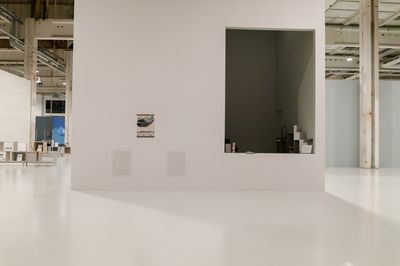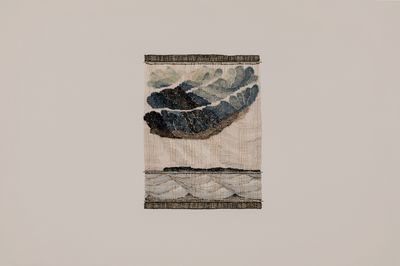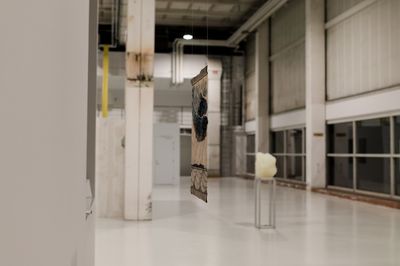Berit HjelholtSkyer (1999)Weaving
The computer emerges out of the history of weaving, the process so often said to be the quintessence of women’s work. The loom is the vanguard site of software development. […] The weaver was integrated into the machinery, bound up with its operations, linked limb by limb to the processes. In the Middle Ages, and before the artificial memories of the printed page, squared paper charts were used to store the information necessary to the accurate development of the design. In early eighteenth century Lyons, Basyle Bouchon developed a mechanism for the automatic selection of threads using an early example of the punched paper rolls which were much later to allow pianos to play and type to be cast. This design was developed by Falcon a couple of years later, who introduced greater complexity with the use of punched cards rather than the roll. It was this principle on which Jacquard based his designs for the automated loom which revolutionised the weaving industry when it was introduced in the 1800s, a principle which continues to guide the industry’s contemporary development. Jacquard’s machine strung the punch cards together, finally automating the operations of the machine requiring only a single human hand. Jacquard’s system of punch card programs brought the information age to the beginning of the nineteenth century. His automated loom was the first to store its own information, functioning with its own software, an early migration of control from weaver to machinery.1
-
Sadie Plant, The Future Looms: Weaving Women and Cybernetics. ↩
Biography
Berit Hjelholt (21 September 1920 – 30 July 2016), was a Danish textile artist.


